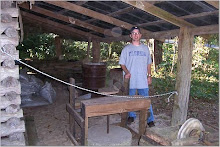In her article “Movie or Monograph? A Historian/Filmmaker’s Perspective, Natalie Davis discusses the problems that historical movie makers face. She focuses on how historians act as a type of consultant in the creation historical films. She tells how Hollywood often changes historical facts to get a more dramatic appealing picture that builds drama and keeps the audience engaged she states that their should be corresponding books of historical facts to cover and correct information left out of or contains inaccurate information that occurred during these film productions. Her main argument in my opinion is if people are going to do anything, then they need to do it right. She believes the corresponding books would be a move in the right direction. I believe that some people would read the corresponding book but I realize in most cases, far more people will watch the films than ever read the films corresponding books. It is well know amongst historians that historical accuracy is often eschewed in place of Hollywood drama. This is because the film makers want to produce films that are guaranteed to sell tickets than to tell the whole truth. A great example give was on the movie Pearl Harbor. This is a movie Davis stated a corresponding book was needed to go along with the film on Martin Guerre. I believe the corresponding book would be a noteworthy attempt at correcting all wrongs Hollywood has done during film productions while making films on historical figures, places, and events. However, I question if the corresponding books are produced if it will only be in vain because films almost always out perform literature in dollar amount but literature always out perform films in story told.
The second article I read was Robert Brent Toplin’s “Cinematic History: Where Do We Go from Here?” After reading the Davis article I can see why the Toplin article was assigned as well. The Toplin and Davis are really corresponding together quite well. Both Toplin and Davis advocated understanding the relationship between historical facts and film production is a very logical way. Toplin is a little different than Davis in my opinion because he offers more of an optimistic view of the problems that studios face while decisions on how to present history for entertainment over the need for historians’ need for historical accuracy in these films. What I found odd about this particular article was I could never quite figure out what Toplin was trying to argue. I found it interesting is he is just as much of a proponent for the involvement of historians in the process of producing the Hollywood films of history as he is of holding studios accountable for their portrayal of historic events. Then in another portion of the book he defends the filmmakers’ decisions to stray from telling the historical facts. In doing so the Toplin article does more than the Davis article in telling the story of film production. I like that Toplin argues that historians need to be active behind the scenes and provide these film makers with research for the films they produce. Toplin’s main argument is that these Hollywood films on history should not stand alone and be the essential primary source of review by film critics. In the case of these films Toplin believes it would be best for the critics to include in-depth interviews with any living person directly related to the events the film covered. In essence get a primary source’s view on the events to have something to compare to the events in the film.
The final article I read was Vivien Ellen Rose and Julie Corley’s article, “A Trademark Approach to the Past: Ken Burns, the Historical Profession, and Assessing Popular Presentations of the Past,” unlike the previous two articles this article covered historical documentaries more so than it Hollywood productions. The article covered Ken Burns’ documentary of Elizabeth Cady Stanton and Susan B. Anthony entitled Not for Ourselves Alone: The Story of Elizabeth Cady Stanton and Susan B. Anthony. I am not familiar with any Ken Burns productions, after reading this article I am not sure what to think of him. I believe this article is a strong criticism of Ken Burns’ and his contributions to the making of documentary films even though I have never seen one. The authors believe that Burns lacks a since of historical professionalism when dealing with the past in the making of his documentaries. The authors also argue that Burns’ tends to create stories that are one-sided especially the documentary he did on Elizabeth Cady Stanton and Susan B. Anthony and their fight during the women’s suffrage movement. The authors believed that Burns tends to leave or take out historical facts that do not fit with his narrative. They wrote that Burns had completely disregarded any current research of these two women and choose instead to use music, photos, and information out of context because it his narrative better. According to the authors the main problem with Burns is he tends to mold historical content he provides to the viewing public. They also stated that he has his won specific definition of what history making is and how it should be done. What the authors of this article want the reader to know is the Burns’ documentaries are made on the lives of heroes, and it’s their story Burns was to sell to the public. After completing this article it seems to me that the authors’ major problem with Burns is they believe he tends to take only what can contribute to the story he wants to tell in his documentary and leaves out what the authors feel is important elements because it would not flow well in his film. The authors stated that Burns focuses on certain people only, and does not take into consideration new research on the subjects that could change the outcome of the documentary.
The Final Frontier?
17 years ago
